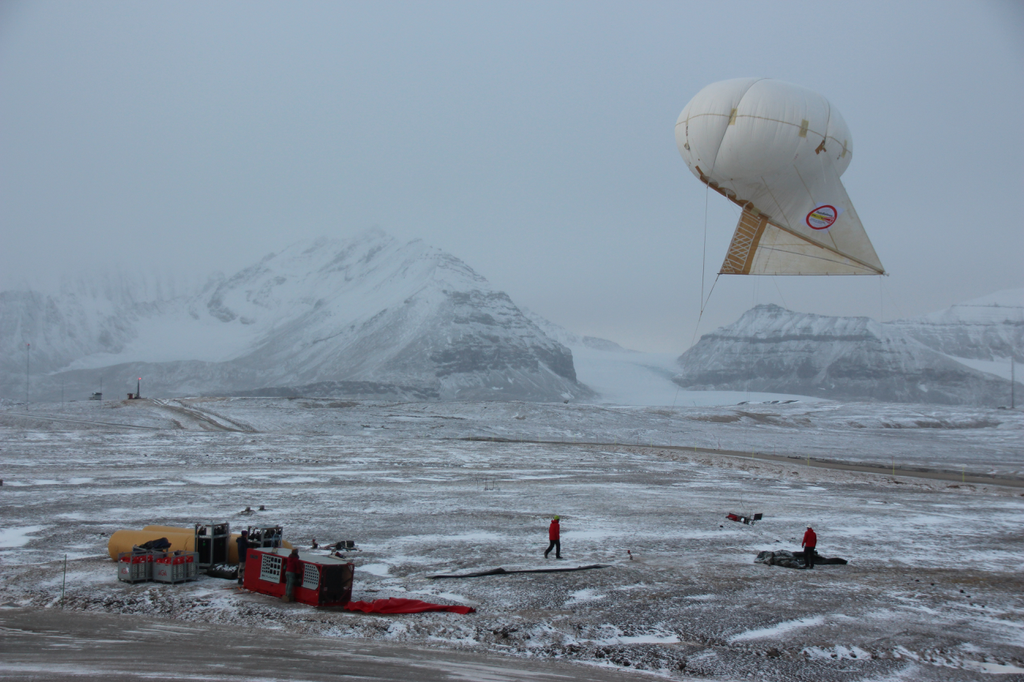Sunday March 8, 2020: Jörg, Guangyu, Michael and I are ready to fly to Ny-Ålesund for our second measurement campaign. We plan to analyse the aerosols from the ambient air in a container and measure microphysical properties of clouds with an instrument attached to a tethered balloon. The first campaign had occurred in October and November 2019 and we are very excited to go back. In the past few weeks, more restrictions were taken to prevent the propagation of the COVID-19 virus and we are a little bit scared if we will make it to Ny-Ålesund without any trouble. We arrive in Oslo on the same evening and go to the hotel, there don’t seem to be any restrictions. On the next morning, we fly to Longyearbyen and wait for the small plane for Ny-Ålesund. It already feels freezing at -22°C and after a small tour around the airport, we take refuge in the waiting room where we meet familiar faces of people we know from the first campaign. Here we get a surprising call. Nicolas, the nurse of the Ny-Ålesund settlement, asking if we are all healthy or had travelled to high-risk countries in recent weeks. We confirm that we are all doing fine, turn off our phones (Ny-Ålesund is a radio silent area) and are ready for take-off. Most of the scientists trying to reach Ny-Ålesund after us won’t be that lucky, as some days later many countries worldwide close their border and thus scientists are not allowed to leave.
It feels even more freezing at the arrival in Ny-Ålesund. The temperature there is around -30°C and with a bit of windchill it feels even colder. The sun had risen for the first time above the horizon one day earlier and thus the days are still short but with long twilight. We install ourselves in the room in the Brakkeriggen building and feel at home after a few hours. On the next day, we are ready to begin with the installation of the measurement site. However, we already have a first surprise. The winch that we use to lift up our tethered balloon system is completely full of snow. It stayed outside for the entire winter and even though not that much precipitation occurred, the strong winds pushed snow below the tarpaulin of the winch and caused the dense accumulation of snow from the ground to the top of the winch. Michael and I begin to shovel. It takes us several days of shovelling to get all the snow away and get the winch working again. While shovelling at -30°C, we need to be careful not to get frostbite! During this time, Jörg and Guangyu make the container ready for the aerosol measurements.
About one week later, the winch and aerosol setup are ready and we are looking forward to inflating the tethered balloon. We are already excited about the first flights. But, we were not expecting the malice of the cold. At such temperatures, everything freezes almost instantaneously. Unfortunately, the inner bubble of the tethered balloon as well. Inflating the frozen bubble caused small cracks and the helium escaped through them. Some days later, the balloon is empty and all the helium is gone. We try not to despair and find a solution. Luckily, we have a spare bubble, but we do not have enough helium to refill it. Moreover, the temperature does not seem to increase at any time soon. This year was much colder than usual in Svalbard and for the first time in more than ten years, Kongsfjorden froze again. So what can we do? After many calls and emails, we finally manage to get helium on the next boat arriving one week later and the Korean are kind enough to give us some helium. They were stuck in Korea because of the Coronavirus anyway, like many scientists. Nevertheless, we have still no solution against the cold. If we inflate the balloon in the same conditions, the same will happen again. If we just could inflate it in the warmth… That’s it! We can inflate it in the warm harbour storage, but how can we move the large balloon to the measurement site afterwards? Could we use a truck? Let’s try it! No sooner said than done, the balloon is inflated, attached to a truck and moved to the measurement site, with thanks for the help of many citizens of Ny-Ålesund. On the next day, the weather is perfect for cloud measurements and we fly into the clouds, hurrah!
Nevertheless, we again underestimated the harshness of the Arctic climate. On the same evening, a strong storm passes Ny-Ålesund with mean wind speeds of 70 km/h. The cold temperatures and the strong winds are destructive for the balloon and on the next day, it is empty again. Despite all the misfortune, we try to stay optimistic and finally install the instrument at the mountain top observatory close to the town, and some days later we are able to measure some clouds again! This at least allows us to have a bit more free time to discover the surroundings of Ny-Ålesund and spend time with the inhabitants, who are very kind and helpful people. At the end of April, it is time to leave Ny-Ålesund to come back to Switzerland. We are all sad to leave this fascinating place and the inhabitants, who already became our friends and are sad that the only scientists in town are leaving. Nevertheless, it is time to go back to the real world, which we find out, has changed a lot since our departure.

In this blog post, Julie Pasquier gives details about her field trip carried out with her colleague Jan Henneberger, researcher at ETH Zurich and grantee of a SPI Exploratory Grant 2018. This field note relates to their field trip to Ny-Ålesund in Svalbard, in March 2020, funded by this grant.
Header photographs: © Jörg Wieder
© All rights reserved, Julie Pasquier 2024